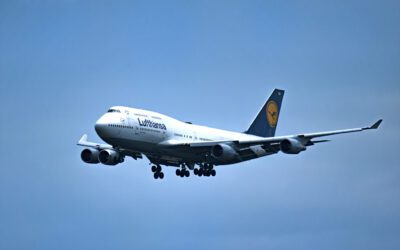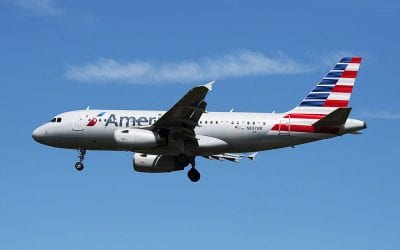Thinking about taking a train trip on Amtrak with a friend, spouse, partner or the whole family, but worried about sharing sleeping accommodations, being able to sleep in coach, and keeping kids occupied? Worry not! Trains provide a relaxing and convivial ride that will allow you to spend more quality time with your pals or loved ones while in motion than even a car trip. And, with Amtrak’s numerous discount programs, a family train trip is more comparable to a car trip than you might think in terms of price. (In case you’re wondering, I do not work for Amtrak. I am simply an advocate and devotee of train travel. I was on the staff, and am now on the national advisory council, of the National Association of Railroad Passengers.)
Deals: Children ages 3 through 15 ride at half off the full adult rail fare, on all trains all the time, and it doesn’t matter how far in advance you book the reservation (though the farther in advance you book, the lower the base fare is likely to be). Infants ages 0 to 2 ride free. Anyone under 16 must be accompanied by an adult who is 18 or over, except those ages 13-15 under certain, very restricted circumstances that require pre-arrangement with Amtrak (over the phone or with a ticket agent at a staffed station). Amtrak also offers many half-off companion fare deals, where a second person may join you for 50 percent of the full adult rail fare, but only on certain route segments at various times. To find out when and where these deals are offered, join Amtrak’s email list (enter your email address at the bottom of the Amtrak.com homepage), or better yet, become a member of Amtrak Guest Rewards, the railroad’s point-earning loyalty program (it’s free to join). There is also a 15 percent anytime discount for seniors (age 62 and better), and 10 percent discounts for members of AAA, Student Advantage, Veterans Advantage, active-duty military and the National Association of Railroad Passengers (most of which require reservations to be made at least three days in advance of departure and are valid on most route segments, with a few exceptions).
Sleeping accommodations: On 14 overnight trains, Amtrak offers sleeping car service, which consists of a private room with two bunk beds, access to a shower, and includes meals in the dining car for as many passengers as are in each room (except, for now, on the Miami-New York Silver Star). There is an accommodation charge for each room on top of the rail fare, which varies according to the number of rooms that have sold and the origin-destination pair. But the charge per room is the same regardless of how many travelers are sharing the room. Three types of rooms are available on all trains. Roomettes feature smaller bunk beds parallel to the window, with shared bathrooms down the hall (except on single-level Viewliner trains — those that serve New York — which have in-room toilets and sinks). Bedrooms feature larger bunk beds that are perpendicular to the window and private in-room toilet and shower (in the same compartment) and sink. Accessible Bedrooms are like Bedrooms, but are larger to accommodate wheelchairs, and are only available to those with disabilities by special reservation until 2 weeks before departure, when they are opened up to any traveler.
The only type of room that sleeps more than two passengers is the Family Bedroom, which is available only on trains equipped with bi-level Superliner cars (all trains operating south and west of Chicago, along with the Chicago-Washington Capitol Limited). The Family Bedroom sleeps four: two on larger beds (the same size as in a Bedroom) perpendicular to the window, and two on smaller beds (the same size as in a Roomette) parallel to the window, and is down the hall from three restrooms (shared with Roomette passengers) and a shared shower room. In Superliners, the Family Bedroom and Accessible Bedroom are located on the lower level of the bi-level car, while all regular Bedrooms are on the upper level, and there are Roomettes on both levels. Finally, if you reserve two Bedrooms that are adjacent to each other, you can have the door between them opened to create a single en-suite room with four larger beds. And, depending on how willing you are to share a narrow bed, couples can even share the lower berth in a Bedroom, which is not possible in a Roomette. Bedrooms are generally $60 to $150 more expensive than Roomettes, with Family Bedrooms usually falling in between the two in price.
Traveling coach as a family or group: On all trains, Amtrak sets aside a certain number of coach seats for groups of two, three or four who are traveling together. When you board the train, you will usually find a uniformed conductor or coach attendant on the platform who is assigning seats. Be sure to tell him or her that you are traveling as a group, and the employee will do his or her best to seat you together. Depending on how the coach seats are arranged, there may be banks of four seats, two facing two, sometimes around a table. If these are not available, groups of three or four should be able to be seated across the aisle from each other. On almost all Amtrak trains, the majority of coach seats face the direction of travel. Many daytime trains also offer Business Class seating for a per-seat accommodation charge that ranges from $5 to $50. This generally gives you a more comfortable seat with more legroom, sometimes with 2-and-1 seating (two seats on one side of the aisle and one seat on the other) and includes amenities that vary by route, but range from complimentary soft drinks, newspapers and pillows to coupons redeemable for food and beverage purchases in the cafe car, and usually grants you priority boarding. Families with small children and seniors are also usually granted priority boarding at large stations.
All Amtrak coach seats are wider and offer more legroom and can recline farther than airline economy seats. Superliner coach seats are especially commodious for overnight travel. However, if traveling overnight in coach, be sure to bring a pillow or neck pillow, a blanket, and an eye cover, as none of these are provided (though you can purchase a “Comfort Kit” that has these items in the cafe car for $8). If you’re seated next to a close friend or loved one, you can of course share a blanket and lean on each other to sleep more comfortably. If you’re traveling alone, you will likely be seated next to a stranger, but you might be lucky enough to have two seats to yourself, in which case you can rest fairly comfortably across the two — but beware: a crewmember might awaken you if someone boarding in the middle of the night needs the seat next to you.
On-board entertainment: Trains provide families and groups the time and space to enjoy each other’s company in a variety of ways. Nearly every train has a cafe car with tables that seat four that are open to all passengers, and Western long-distance trains using Superliner equipment have a Sightseer Lounge car, which features wraparound windows, eight tables and 30 swiveling seats facing the windows in configurations of single, two and three together on the upper level. The cafe food service is on the lower level (and is not included for sleeper passengers). And of course, there is the dining car, where your family will be able to enjoy sit-down breakfast, lunch and dinner — included in your accommodation charge for sleepers (except for alcohol, which can be purchased), and available for purchase for coach passengers. You can also bring your own food on board to eat at your seat or in your sleeper, and you are allowed to consume your own alcohol in a sleeper, but not in coach.
Dinner is always and lunch is usually by reservation (the dining car service attendant will come through the train taking reservations about an hour before the meal service begins, and reservation times are approximate) and breakfast is first-come, first-served within a 2-3 hour period. The dining car menu includes a steak, chicken and fish entree and various specials and “light” entrees, plus a vegetarian pasta. Vegan and kosher meals are available, but must be requested by phone at least seven days before departure. A group of four will be able to have a table to itself, but groups of three or less will be joined by other passengers under “community seating,” which gives you the opportunity to make a new friend. Remember to leave a tip after your meal, even if it is included with your sleeper, just as you would at a restaurant (also remember to tip your sleeping car attendant when you detrain — the customary tip is $5 per person per night).
You can bring any type of game or puzzle, books, cards, etc., as well as any electronics. The lounge car tables are great for playing card and board games. There are two electric outlets at each seat and two in each sleeper compartment, and there are several throughout the Sightseer Lounge car. Many passengers bring portable DVD players or watch TV shows or movies on their laptop or tablet. WiFi is available on many short-distance trains, but not on long distance trains, so passengers who need to stay connected often bring mobile hotspots from cell carriers. But you may find yourself ensconced with taking in the unique experience of the American landscape that only the train provides — every route features scenic highlights. During the summer, many long-distance trains host National Park Service Trails and Rails guides, who provide an interpretive and historical narrative about the places through which the train passes. You can encourage your kids to observe the world outside the window by playing “I spy” and similar games.
If you haven’t yet, I hope you have the opportunity to experience the mode of travel that truly makes the journey as fun and relaxing as the destination. Your adventure begins the moment you step aboard. If you have any questions I haven’t answered, please ask them in the comments and I’ll respond in a timely manner.

I am a writer, researcher, multimedia communications professional, and photo/videographer.
I am focused on achieving sustainable economic development and human-scaled communities through a robust multi-modal transportation system centered around a network of high-performance local, regional, and inter-regional passenger trains and frequent and reliable rail transit (streetcars, light rail, commuter rail and subways/metros).



